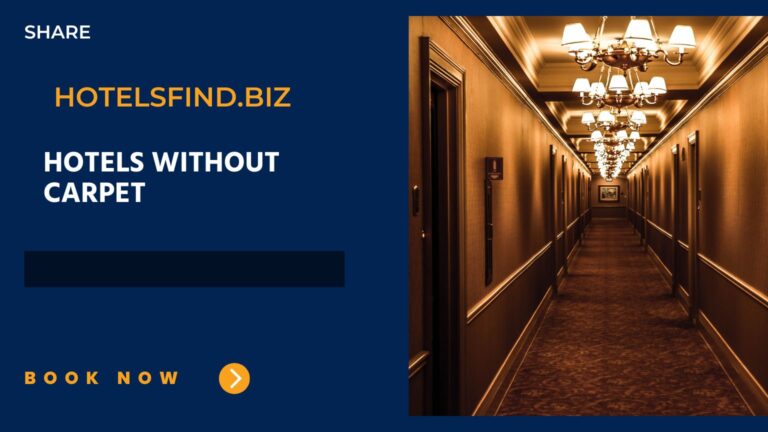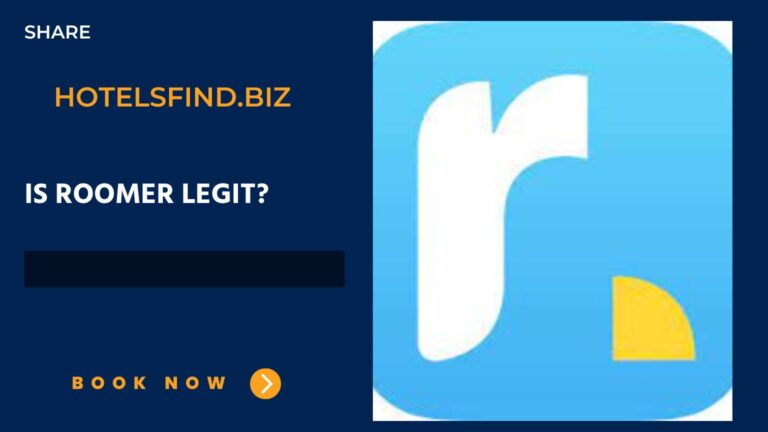What Is Hotel Rack Rate? (Non-Discounted Rate) In 2024
The hotel industry often uses the term “rack rate” to refer to the standard, non-discounted price of a room before any special offers or discounts are applied.
What Is Hotel Rack Rate? Understanding the concept of a hotel rack rate is crucial for travelers seeking transparency in pricing and negotiating the best deals.
In this exploration, we delve into the fundamentals of the hotel rack rate, its significance in the hospitality sector,
and how both guests and establishments navigate the dynamic landscape of pricing in the accommodation industry.

Definition and Explanation
The hotel rack rate is the standard, non-discounted rate that a hotel charges for its rooms.
It serves as the baseline price, reflecting the cost of staying in a room without any special promotions or discounts applied. Essentially, it’s the official rate listed on the hotel’s tariff.
Factors Influencing Rack Rates
Various factors contribute to the establishment of rack rates. Seasonal fluctuations, local events, and the hotel’s overall demand and supply dynamics all play a role.
Understanding these factors provides insights into why hotels set their rack rates at particular levels.
Why Do Hotels Have Rack Rates?
The concept of rack rates has a historical background rooted in the traditional practices of the hospitality industry.
Historical Context
In the past, hotels relied heavily on walk-in customers. Displaying rack rates prominently allowed hotels to communicate transparently with potential guests who would decide to stay on the spot.
While times have changed, the tradition of having a standard rate remains.
Pricing Strategy
Hotels use rack rates as part of their pricing strategy. The seemingly high initial cost creates a perception of value, making discounted rates or special promotions more enticing.
This strategy aims to maximize revenue while providing guests with a sense of exclusivity.
How Are Rack Rates Determined?
The determination of rack rates involves a complex interplay of various factors.
Seasonal Variations
Hotels often adjust their rack rates based on seasonal demand.
Peak seasons, such as holidays or major events in the area, can lead to higher rates. Conversely, off-peak periods may see lower rack rates to attract more guests.
Demand and Supply Factors
The basic principles of economics come into play when setting rack rates. If a hotel is in high demand and has limited availability, rack rates tend to rise.
Conversely, in periods of low demand, hotels may reduce rack rates to attract more guests.
Pros and Cons of Rack Rates
Understanding the advantages and disadvantages of rack rates is crucial for both hotels and guests.
Advantages for Hotels
For hotels, having a standard rack rate provides a consistent baseline for revenue calculations. It also helps in establishing the perceived value of their accommodations.
Disadvantages for Guests
On the flip side, guests may find rack rates to be on the higher side.
Without discounts, it might seem like they are paying more than necessary. However, this perception can be mitigated through informed decision-making.
Negotiating Rack Rates
While rack rates are typically non-negotiable, there are instances where guests can try their hand at bargaining.
Tips for Guests
Understanding the factors influencing rack rates is the first step. During slow periods, hotels may be more willing to negotiate.
Loyalty programs, membership discounts, or even simply asking if there are any available discounts can sometimes lead to a better rate.
Instances When Negotiation Is Possible
Negotiation is more likely during off-peak seasons or if the hotel has plenty of available rooms.
However, it’s essential to approach negotiation politely and be prepared for the possibility that the hotel may not be able to accommodate a lower rate.
Online Travel Agencies (OTAs) and Rack Rates
The term “hotel rack rate” refers to the standard or published rate for a hotel room before any discounts or special offers are applied. It is the official price set by the hotel for a particular room category.
While online travel agencies (OTAs) often play a significant role in hotel bookings, and rack rates are essential for understanding a hotel’s pricing structure, it’s crucial to note that these elements won’t be discussed in detail here.
Instead, let’s focus on unraveling the concept of the hotel rack rate and its significance in the hospitality industry.
Influence of OTAs on Pricing
OTAs often display discounted rates, making it appear as though guests are getting a better deal than the rack rate.
Hotels may adjust their pricing strategies to remain competitive on these platforms, impacting the perception of their rack rates.
How to Find the Best Deals?
While OTAs can offer great deals, it’s also worth checking the hotel’s official website. Some hotels provide exclusive promotions or loyalty discounts that may not be available through third-party platforms.
Hidden Fees and Rack Rates
It’s not uncommon for additional charges to be associated with rack rates, leading to unexpected expenses for guests.
Common Additional Charges
These fees may include taxes, resort fees, parking charges, and other incidentals. Guests must be aware of these potential extras when budgeting for their stay.
Ways to Avoid Surprises
Reading the fine print and contacting the hotel directly for a breakdown of fees can help guests avoid surprises.
Some hotels may offer packages that include these fees, providing a more transparent and predictable cost.
Discounts vs Rack Rates
The hotel rack rate refers to the standard, non-discounted price for a hotel room. Unlike discounted rates,
which are often offered through promotions, memberships, or special deals, the rack rate represents the baseline cost of accommodation.
Essentially, it is the original price set by the hotel before any reductions or markdowns. Understanding the hotel rack rate is crucial for travelers seeking transparency in pricing and making informed decisions about their lodging expenses.
Comparison of Different Pricing Structures
While rack rates establish a baseline, discounts can significantly reduce the overall cost of a stay.
Guests should weigh the benefits of discounts against the potential limitations, such as restricted booking conditions or non-refundable rates.
When Discounts Are Beneficial?
Discounts are particularly advantageous for budget-conscious travelers. Planning ahead, joining loyalty programs, and taking advantage of special promotions can result in substantial savings.
Rack Rates vs Actual Prices
The term “hotel rack rate” refers to the standard or published price that a hotel sets for its rooms before any discounts or negotiations.
It represents the maximum amount a guest would pay for a room without any special considerations.
Unlike actual prices, which can be influenced by factors such as promotions, discounts, or negotiations, the rack rate serves as a baseline reference.
Understanding what the hotel rack rate is can help travelers make informed decisions and assess the value of any discounts or deals they may encounter when booking accommodations.
Discrepancies and Reasons
Actual prices may vary due to taxes, additional fees, or discounts applied during the booking process.
Guests should be aware of these variations to make more informed decisions when comparing different hotels.
Transparency in Pricing
Hotels that prioritize transparency in their pricing, providing a clear breakdown of costs, contribute to a more positive guest experience. This transparency fosters trust and helps manage guest expectations.
Impact of Rack Rates on Customer Experience
The way hotels handle their rack rates can significantly influence guest satisfaction.
Guest Satisfaction
Guests who understand and accept the rationale behind rack rates are more likely to have a positive experience. Transparent communication and fair pricing contribute to overall satisfaction.
Strategies for Enhancing Value
Hotels can enhance the perceived value of their rack rates by offering additional amenities or services. This could include complimentary breakfast, Wi-Fi, or access to facilities, making the overall stay more appealing.
Case Studies
Examining real-world examples provides insights into the effectiveness of implementing rack rates.
Examples of Hotels Implementing Rack Rates Effectively
Certain hotels successfully leverage rack rates as part of their branding strategy, creating an aura of exclusivity and luxury.
Instances Where it Led to Customer Dissatisfaction
Conversely, instances where guests felt the rack rate did not align with the quality of the accommodations can lead to negative reviews and impact a hotel’s reputation.
Future Trends in Hotel Pricing
The future of hotel pricing is influenced by evolving strategies and technological advancements.
Evolving Strategies
Hotels are likely to continue adapting their pricing strategies to remain competitive in a dynamic market. This may involve more personalized pricing based on individual guest preferences and behaviors.
Technological Advancements and Their Impact
Technological innovations, such as artificial intelligence and data analytics, will play a significant role in shaping pricing models.
This could lead to more dynamic and real-time adjustments based on demand and other relevant factors.
People also ask
What is the meaning of rack rate?
The term u0022rack rateu0022 refers to the standard, non-discounted price that a hotel charges for its rooms. u003cbru003eu003cbru003eIt serves as the baseline cost without any special promotions or discounts applied, providing a reference point for pricing in the hospitality industry.
What is the difference between rack rate and discount rate?
The key difference between rack rate and discount rate lies in the pricing structure of hotel rooms. u003cbru003eu003cbru003eThe rack rate is the standard, non-discounted price set by the hotel, serving as the baseline cost for a room. u003cbru003eu003cbru003eIn contrast, the discount rate is a reduced price offered to guests through promotions, memberships, or other special deals, providing a lower cost than the original rack rate. u003cbru003eu003cbru003eDiscounts are applied to encourage bookings, attract customers, and enhance the overall value proposition for guests.
What does rack stand for in hotels?
In the context of hotels, u0022racku0022 does not stand for an acronym. u003cbru003eu003cbru003eThe term u0022racku0022 in u0022rack rateu0022 refers to the fixed, non-negotiable price that is prominently displayed on a hotel’s rate card or tariff sheet. u003cbru003eu003cbru003eIt is essentially the standard, full price for a room before any discounts or special promotions are applied. u003cbru003eu003cbru003eThe origin of the term is rooted in historical practices when hotels would display their rates on racks for walk-in guests to see.
Can a hotel charge more than the rack rate?
Yes, a hotel can charge more than the rack rate under certain circumstances. u003cbru003eu003cbru003eAdditional charges, such as taxes, resort fees, or other incidentals, may contribute to a higher final cost for the guest. u003cbru003eu003cbru003eMoreover, during peak seasons or high-demand periods, hotels may implement dynamic pricing strategies, leading to rates higher than the standard rack rate. u003cbru003eu003cbru003eHowever, such situations are generally transparent and communicated clearly to guests during the booking process.
Conclusion – What Is Hotel Rack Rate?
In conclusion, understanding hotel rack rates is crucial for both hotels and guests. It provides insights into the pricing strategies of hotels and empowers guests to make informed decisions.
While rack rates serve as a baseline, the hospitality industry’s future will undoubtedly bring new innovations and challenges to pricing structures.







